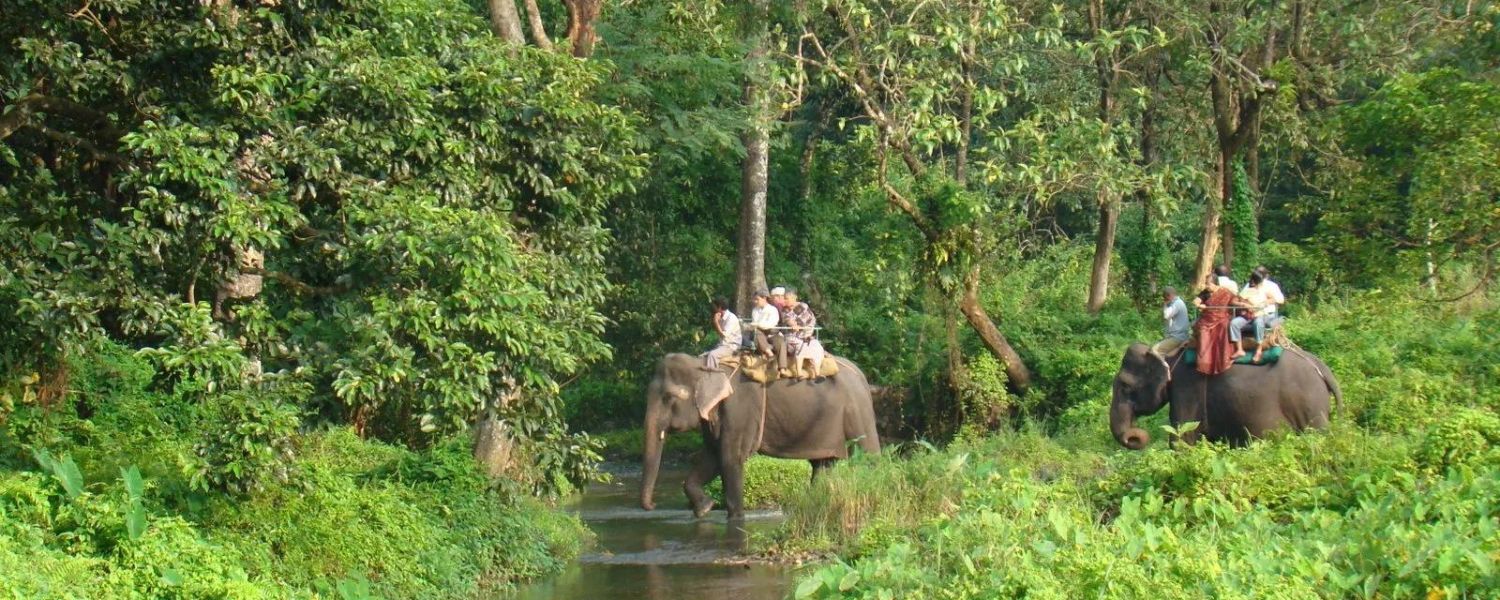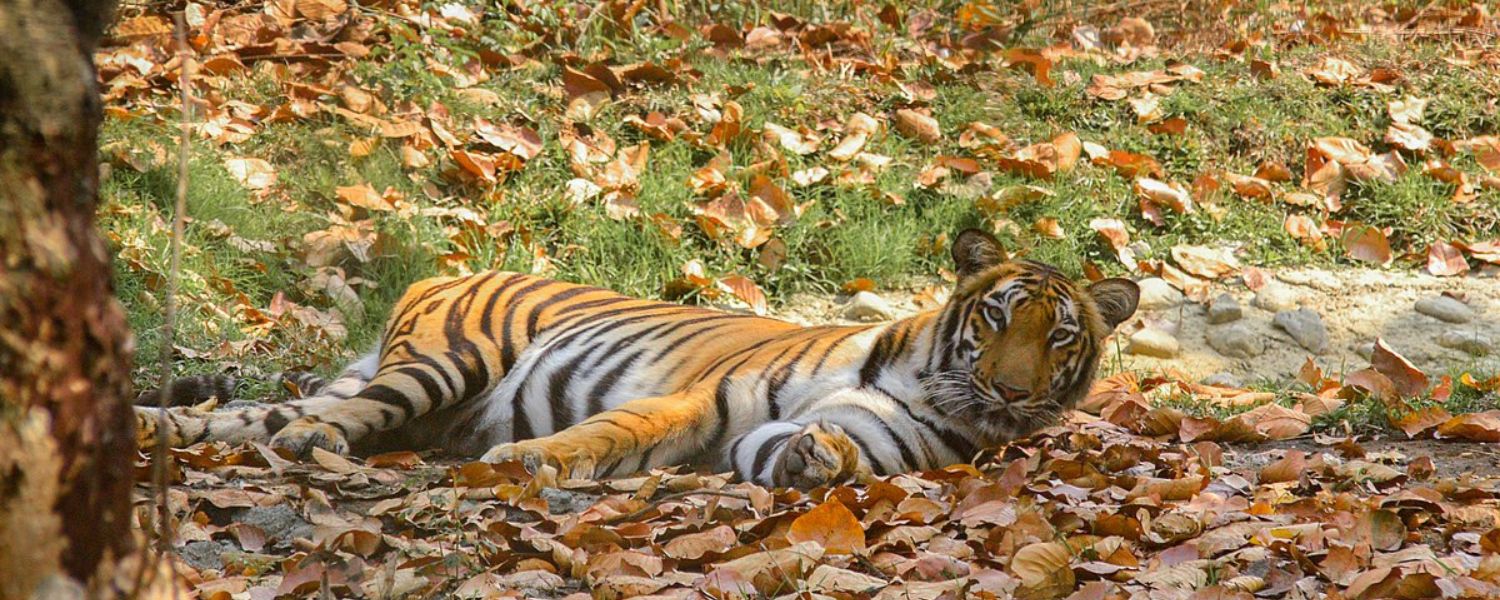The Mahananda Wildlife Sanctuary is a testament to India’s rich natural heritage.
Located in the picturesque Darjeeling district of West Bengal, this sanctuary is a sanctuary for wildlife and adventure seekers.
However, a 30-minute drive from Siliguri unveils breathtaking beauty and ecological diversity. Further, the Mahananda Wildlife Sanctuary is a haven for many species, from the majestic Indian elephants to the elusive leopard.
Home to an impressive array of fauna, including Indian bison, chital (spotted deer), and rhesus monkeys, visitors can glimpse the vibrant tapestry of life that thrives within its boundaries.
Whether, with its lush forests, gurgling streams, and panoramic vistas, the sanctuary beckons travelers to immerse themselves in the wonders of the natural world.
1. Geography

However, situated amidst the picturesque landscapes of Kurseong hills, the Mahananda Wildlife Sanctuary stands as a testament to the ecosystems that thrive within its borders.
Additionally, from the lush riverain forests of Khayer-Sisoo to the dense mixed-wet forests found in the elevated reaches of Latpanchar, this sanctuary boasts a rich tapestry of biodiversity.
Further, spanning a range of elevations from 166 meters in the southern Sukna forest to a staggering 1,500 meters at the Latkothi beat office, it harbors a plethora of mammal, bird, and reptile species.
Moreover, the crown jewel of this sanctuary, Latpanchar, rises majestically as its highest point, boasting an average elevation of 1,400 meters.
This variation in elevation and forest types not only creates a visually stunning landscape but also provides a habitat for numerous biome-restricted species, making Mahananda Wildlife Sanctuary a haven for wildlife enthusiasts and nature lovers alike, and you can explore more Historical Monuments of West Bengal.
2. Biomes

However, within the lush expanse of the Mahananda Wildlife Sanctuary lies a mesmerizing tapestry of diverse biomes, each painting a unique portrait of the natural world.
Transitioning seamlessly across the sanctuary’s terrain, these biomes reflect the rich biodiversity thriving within this sanctuary’s embrace Mahananda Wildlife Sanctuary ticket price.
Furthermore, among the primary biomes gracing this sanctuary are the Sino-Himalayan Temperate Forest of the Eastern Himalayan broadleaf forests (Biome 7), the Sino-Himalayan Subtropical Forest of the Himalayan subtropical broadleaf forests (Biome 8), and the Indo-Chinese Tropical Moist Forest of the Himalayan subtropical pine forests (Biome 9).
Additioanlly, from one biome to another within the sanctuary is akin to embarking on a journey through varying ecosystems, each offering its own distinctive charm and ecological significance Mahananda Wildlife Sanctuary timings.
From the majestic canopy of temperate forests to the verdant embrace of subtropical foliage and the enchanting allure of tropical moist forests, Mahananda Wildlife Sanctuary is a haven for an array of flora and fauna.
These biomes, characteristic of the foothills of the Bhutan-Nepal-India hilly region, span an altitudinal range of 166 meters to 1,500 meters.
Visitors traverse the sanctuary’s trails and are treated to a sensory symphony of sights, sounds, and scents, each biome revealing a new chapter in the sanctuary’s ecological narrative. Truly, Mahananda Wildlife Sanctuary is a testament to the splendor and diversity of nature’s bounty.
3. Fauna

Transitioning seamlessly from the canopy to the forest floor, the avian inhabitants paint the skies with hues of vibrant plumage.
The majestic Rufous-necked Hornbill, the regal Oriental Pied Hornbill, and the imposing Great Hornbill reign supreme, a testament to the sanctuary’s conservation efforts.
Complementing their grandeur, a symphony of calls fills the air, courtesy of swallows, swifts, thrushes, babblers, warblers, rollers, minivets, and sunbirds, their melodies echoing through the canopy.
Venturing deeper into the sanctuary, one encounters a menagerie of mammals, some so rare they seem almost mythical.
The elusive Himalayan serow, the formidable Himalayan porcupine, and the enigmatic Asian black bear roam these verdant expanses, adding a sense of mystery to the sanctuary’s allure.
Transitioning from the familiar to the extraordinary, sightings of the elusive Binturong and the elusive Clouded Leopard elevate the sanctuary’s status as a conservation haven.
Amidst this diverse landscape, Indian elephants, bison, chital, barking deer, sambar, rhesus monkeys, fishing cats, jungle cats, and leopards navigate their respective niches, each contributing to the sanctuary’s rich tapestry of life.
Conclusion
In conclusion, Mahananda Wildlife Sanctuary is a testament to the coexistence of diverse ecosystems and the rich tapestry of life they support.
Nestled within the breathtaking landscapes of the Darjeeling district in West Bengal, this sanctuary beckons wildlife enthusiasts and nature lovers alike to its splendor.
However, from the verdant riverain forests of Khayer-Sisoo to the lofty peaks of Latpanchar, Mahananda offers a sanctuary for an impressive array of fauna, including the majestic Indian elephants, elusive leopards, and a myriad of avian species such as the vibrant Rufous-necked Hornbill and regal Great Hornbill.
The sanctuary’s diverse biomes, spanning altitudes from 166 meters to 1,500 meters, create a mosaic of habitats, each contributing to the sanctuary’s ecological significance.
Further, visitors to Mahananda Wildlife Sanctuary are treated to a sensory journey through temperate forests, subtropical foliage, and tropical moist forests, each biome revealing its own unique charm and biodiversity.
FAQ
Q. Which animals are found in Mahananda Wildlife Sanctuary?
A. Mahananda Wildlife Sanctuary is home to various fascinating mammalian species, including Indian elephants, Indian bison, chital (spotted deer), barking deer, sambar, and rhesus monkeys, and several lesser-known cats, such as fishing cats and jungle cats. The elusive leopard also roams these lush forests.
Q. What birds can be spotted in Mahananda Wildlife Sanctuary?
A. Bird enthusiasts will delight in the sanctuary’s avian diversity, which includes peacocks, kingfishers, flycatchers, Himalayan pied great hornbills, peafowls, racket-tailed drongos, robins, woodpeckers, and elegant egrets.
Q. What is the history of Mahananda Wildlife Sanctuary?
A. Initially established as a game sanctuary, Mahananda Wildlife Sanctuary transitioned into a protected area in 1959. Initially catering to recreational animal rides, it now safeguards endangered species like the Indian Bison and Royal Bengal Tiger.
Q. In which district is Mahananda Wildlife Sanctuary located in West Bengal?
A. However, within the picturesque Darjeeling district of West Bengal, India, Mahananda Wildlife Sanctuary is easily accessible from Siliguri, just a 30-minute drive away. Sukna, the sanctuary’s gateway, is a mere 13 km from Siliguri and 28 km from Bagdogra Airport.










